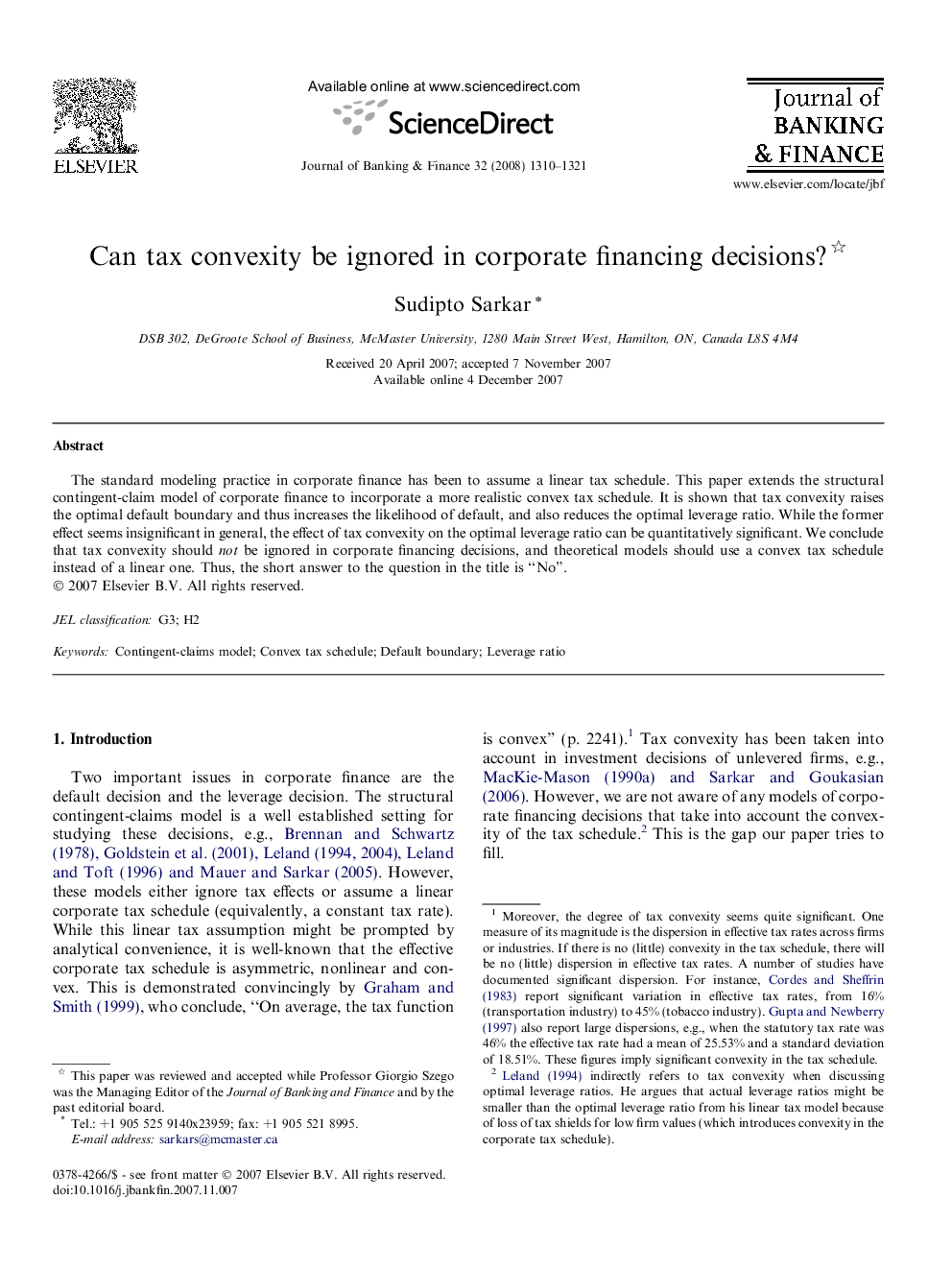| Article ID | Journal | Published Year | Pages | File Type |
|---|---|---|---|---|
| 5090770 | Journal of Banking & Finance | 2008 | 12 Pages |
Abstract
The standard modeling practice in corporate finance has been to assume a linear tax schedule. This paper extends the structural contingent-claim model of corporate finance to incorporate a more realistic convex tax schedule. It is shown that tax convexity raises the optimal default boundary and thus increases the likelihood of default, and also reduces the optimal leverage ratio. While the former effect seems insignificant in general, the effect of tax convexity on the optimal leverage ratio can be quantitatively significant. We conclude that tax convexity should not be ignored in corporate financing decisions, and theoretical models should use a convex tax schedule instead of a linear one. Thus, the short answer to the question in the title is “No”.
Keywords
Related Topics
Social Sciences and Humanities
Economics, Econometrics and Finance
Economics and Econometrics
Authors
Sudipto Sarkar,
